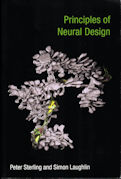Neuroscience research has exploded,
with mountains of new facts and mechanisms emerging from research laboratories around the world.
And yet a principled framework for organizing all this knowledge has been missing.
In this book, Peter Sterling and Simon Laughlin, two leading neuroscientists, strive to fill this gap,
outlining a set of organizing principles to explain the whys of neural design
that allow the brain to compute so efficiently.
Setting out to “reverse engineer” the brain—disassembling
it to understand it—Sterling and Laughlin avoid speculation about
how the brain might work and endeavor to make sense of what is already known.
Their distinctive contribution is to gather a coherent set of basic rules
and exemplify them across spatial and functional scales.
